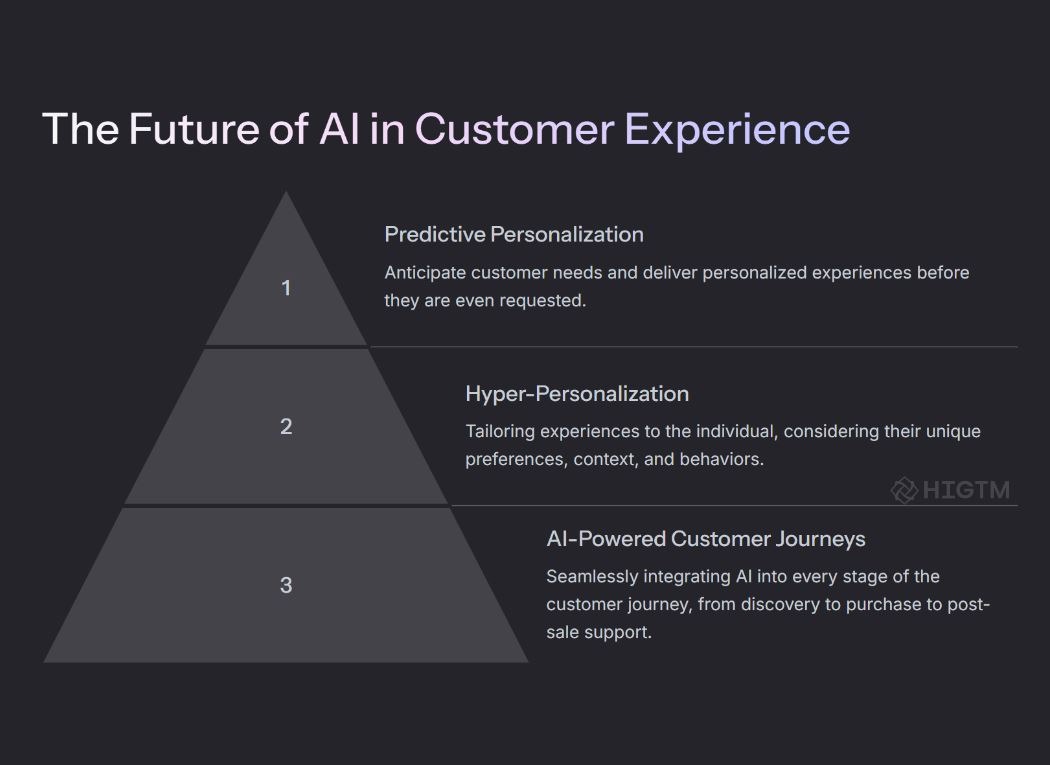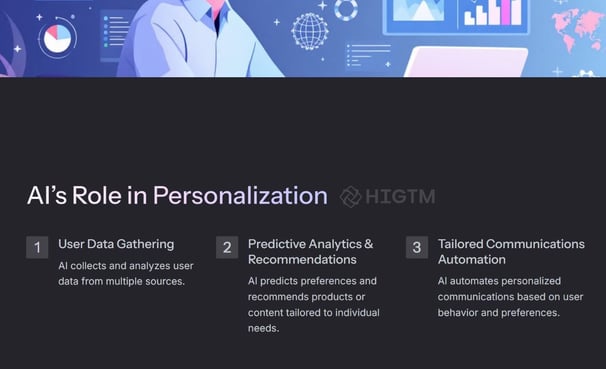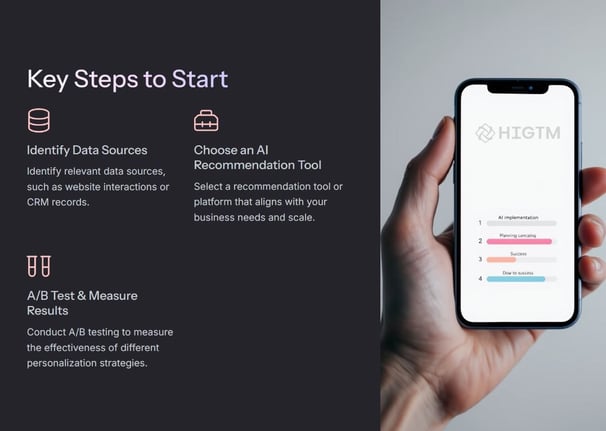28. AI and Customer Experience – Personalization Benefits
Personalization has become a buzzword for organizations seeking to stand out in crowded markets. Customers who feel understood and valued develop lasting connections with a brand. AI, especially in the context of small or medium-sized enterprises (SMEs), plays a significant role in delivering custom experiences at scale. This article explores how AI-driven personalization works, highlights common mistakes, and offers strategies to ensure authentic relationships rather than shallow marketing tactics.
Q1: FOUNDATIONS OF AI IN SME MANAGEMENT - CHAPTER 1 (DAYS 1–31): CORE AI CONCEPTS & VALUE PROPOSITION
Gary Stoyanov PhD
1/28/20256 min read

1. The Rise of Personalization
Companies now realize that generalized marketing messages have limited impact. Modern consumers see countless ads daily. Breaking through that noise often requires an approach that speaks directly to individual preferences or circumstances. AI can sift through vast data points—like browsing habits, purchase history, or demographic profiles—to tailor suggestions or messages to each user’s context.
2. Why AI-Driven Personalization?
2.1 Data Analysis at Scale
Human teams can’t manually process millions of interactions or transactions. AI excels at recognizing patterns and segments within large data sets. Whether you run an online shop or a local service, it’s feasible to collect user details such as:
Browsing Behavior: Pages viewed, items added to carts, abandoned carts.
Purchase Patterns: Favorite categories, price points, or re-order cycles.
External Signals: Location, device type, or time of day usage.
Algorithms parse this data to predict who might want a specific product or service. This approach elevates the user journey, making them feel your site or emails “just get” them.
2.2 Automated, Timely Reactions
Once trained, your AI can respond instantly. If a user hovers over an item but doesn’t finalize the purchase, the system can trigger a follow-up email with a related discount or complementary item. This timely outreach wins more sales than waiting days for a human marketing manager to catch the pattern.
2.3 Consistent High Quality
AI doesn’t tire or skip tasks because of a busy schedule. Properly calibrated, it provides consistent suggestions or personalized messages every time. Shoppers appreciate feeling recognized on each visit, rather than receiving random or repeated suggestions that ignore past interactions.
3. Tangible Benefits of Personalization
Higher Conversion Rates: Users who see relevant recommendations are more likely to complete purchases.
Increased Customer Satisfaction: Personalized service leaves a positive impression—leading to better reviews and repeat business.
Reduced Return Rates: If suggestions match user preferences, items or services bought are less likely to be returned or canceled.
Enhanced Customer Lifetime Value (CLV): Clients remain loyal when they perceive ongoing value that aligns with their needs.
4. Simple Ways SMEs Can Implement Personalization
4.1 Product Recommendations
A recommendation engine compares user interests or purchase histories to similar profiles and suggests matching items. Tools range from third-party plugins (like eCommerce add-ons) to full custom AI solutions, depending on your budget and technical resources.
4.2 Targeted Email Campaigns
Email clients that integrate with AI can serve dynamic content based on a user’s last actions. For instance, a sports store might send baseball gear specials to users who recently browsed batting gloves. Over time, these targeted messages outperform batch-and-blast emails, which may trigger unsubscribes.
4.3 Chatbots and Virtual Assistants
Chatbots with AI engines can serve tailored help or cross-selling options. A visitor who browsed for winter jackets might get a live chat message pointing out gloves or scarves on sale. These small nudges show awareness without pushing random items.
4.4 On-Site Personalization
Once visitors log in, the website adjusts product listings or homepage banners to suit their tastes. Netflix popularized this model with recommended shows, but the principle applies to smaller contexts: a local bookstore website that highlights new releases in genres someone typically buys.
5. Choosing the Right Data for Personalization
5.1 Relevance Over Quantity
An SME may not need to gather extensive personal info—like birthdays or phone numbers. Start with basic purchase histories or a few preference questions. Too much data can complicate your system and create privacy concerns.
5.2 Direct vs. Indirect Data
Direct: Customers explicitly provide preferences (size, color, genre).
Indirect: Observations like click paths, average time on product pages, or cart additions.
Balancing both helps you refine suggestions but remain mindful of privacy rules.
5.3 Data Quality Matters
Before using data, ensure it’s accurate and consistent. Mislabeled items or incomplete user profiles lead to weird recommendations (like showing baby products to someone browsing men’s shoes). A small data quality check routine avoids these snags.
6. Ethical & Privacy Considerations
AI personalization uses data, often personal in nature. Some steps ensure your approach remains ethical:
Consent & Transparency: Inform users how data will help tailor their experience. Let them opt out if they prefer generic content.
Relevancy vs. Intrusion: Overly personal suggestions may creep people out (e.g., referencing sensitive details). Aim for relevant, not invasive.
Compliance: Laws like GDPR require secure storage of personal data and allow individuals to request removal or modification of their information. SMEs must follow these rules.
7. Possible Challenges & How to Overcome Them
Limited Budget or Expertise
Solution: Start with smaller off-the-shelf AI recommendation engines. Many eCommerce or CRM platforms have built-in modules for simpler personalization.
Overly Complex Tools
Solution: Resist advanced solutions if your data and staff can’t handle them. Growth can come later once you master foundational steps.
Data Silos
Solution: Consolidate user profiles in a central CRM or data platform. This unifies the data feeding your personalization model.
User Fatigue
Solution: Balance personalization so it doesn’t bombard people with pop-ups or emails every day. Relevant content with moderate frequency is key.
8. Steps to Begin an AI Personalization Program
8.1 Define Objectives
Clarify what success looks like. Examples: a 10% sales uplift on your website, 15% higher click-through on marketing emails, or a 5% boost in repeat purchases.
8.2 Choose a Pilot Use Case
Focus on a single channel or process—for instance, homepage product suggestions. This pilot approach makes measurement easier and lowers risk.
8.3 Select Tools & Vendors
Compare AI personalization platforms (or ask existing software providers if they offer recommendation modules). For SMEs, cost and ease of use often matter more than advanced customization features.
8.4 Map Data Flows
Identify where data comes from (website analytics, CRM logs, or user surveys) and how frequently it updates. Without stable data, AI can’t serve consistent personalized experiences.
8.5 Implement & Test
Roll out the pilot, then track metrics like conversion, session duration, or open rates. Use A/B tests where half the users see default content and half see personalized recommendations to confirm effectiveness.
8.6 Assess, Scale, & Refine
Review the pilot’s performance. If results impress, scale the approach to other channels or product lines. Tweak the algorithm’s rules if user feedback indicates certain suggestions are off base.
9. Real-World Examples
Local Fashion Boutique
Scenario: The boutique sets up a recommendation widget that shows matching accessories based on each shopper’s browsing history. This small tweak leads to a modest but measurable increase in accessory sales.
Regional Hardware Store
Scenario: Customers who regularly buy paint get coupons for brushes and tape. Once they redeem these coupons, the system notes these add-on purchases and suggests larger project bundles.
Health & Wellness Platform
Scenario: A subscription-based site personalizes workout videos based on user preferences. AI organizes each user’s homepage with new routines that fit their difficulty level and past sessions.
10. How to Measure Success
10.1 Conversion Rate Uplift
Check if the personalized segment (people who receive suggestions) outperforms a control group that doesn’t see custom content.
10.2 Engagement Metrics
Look at click-through rates on recommended items or read times for suggested articles. Rising engagement signals that personalization resonates.
10.3 Customer Satisfaction Scores
Surveys or rating prompts after the shopping session provide direct feedback. If personalization is too aggressive or irrelevant, negative impressions might appear here.
10.4 Repeat Purchases and Lifetime Value
Track which customers come back more often or spend more after a short period of AI-driven personalization.






11. Avoiding Pitfalls in Personalization
11.1 Over-Personalization
Some tools might recommend niche or super-specific items that scare off customers. For instance, referencing private data in email subject lines feels intrusive. Keep personal touches balanced.
11.2 Stagnant Recommendations
Algorithms need updates or they’ll stagnate. Rotating or fresh content keeps interactions interesting. People notice if they see the same item recommended repeatedly, which can push them away.
11.3 Data Overuse
Collecting everything about each customer can breach privacy guidelines. Stick to relevant details aligned with your user’s preferences and your business needs. Also, keep data storage compliance in mind (e.g., GDPR).
12. The Future of AI Personalization
12.1 Real-Time Adaptation
In the future, algorithms may adapt recommendations on the fly, altering site layouts or email content as user behavior shifts moment to moment.
12.2 Conversational AI
AI-driven chat interfaces might combine personal history with ongoing conversation context, answering detailed questions or referencing prior interactions seamlessly.
12.3 Multi-Channel Integration
Personalization will unify experiences across mobile apps, websites, in-store displays, or social media messaging. SMEs that adopt consistent user profiles across channels will lead the way.
13. Balancing Automation with Human Touch
Though AI handles large volumes of data, a real person’s insight or direct empathy remains vital. Some queries or concerns need that human response. Combining AI’s efficiency with genuine human understanding ensures customers never feel they’re stuck talking to cold algorithms.
14. When to Bring in External Help
SMEs new to AI personalization might need consulting or specialized vendors. Experts can guide data strategies, compliance checks, or technology setups. Outsourcing can jump-start the approach, though your internal team should gain enough knowledge to manage everyday tasks.
Personalization powered by AI strengthens customer relationships by delivering relevant, timely interactions. Start with simple approaches—like product recommendations or targeted emails—and measure results carefully.
Pay attention to data ethics, keep solutions user-friendly, and invite staff to learn and refine the system. Over time, the synergy between AI-based insights and genuine user engagement produces meaningful loyalty gains.
Let’s shape a roadmap that respects privacy, stays feasible, and nurtures deeper connections with your customers.
Turn AI into ROI — Win Faster with HIGTM.
Consult with us to discuss how to manage and grow your business operations with AI.
© 2025 HIGTM. All rights reserved.
